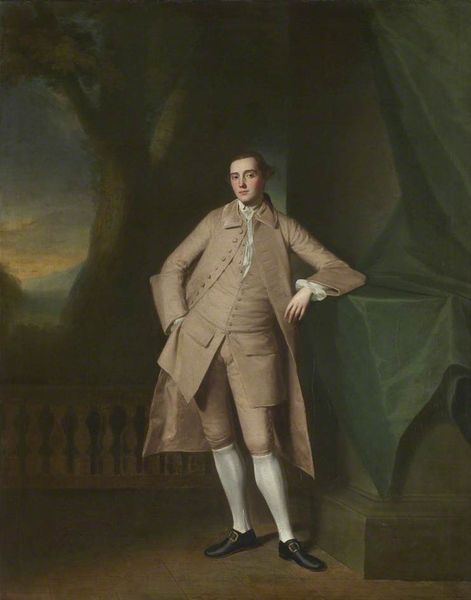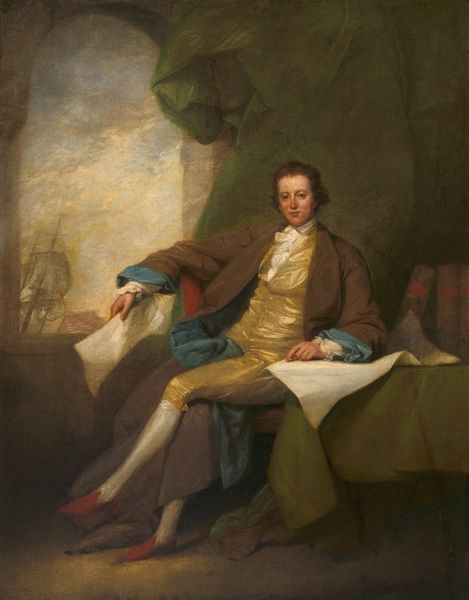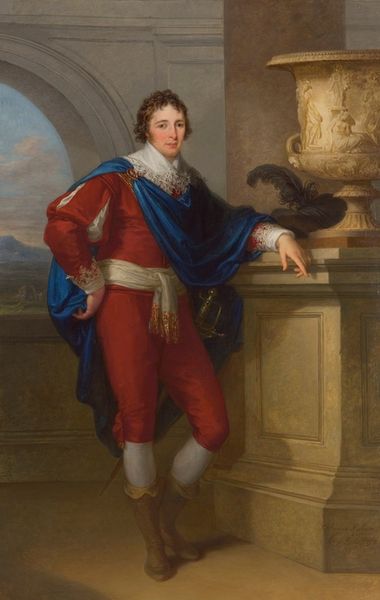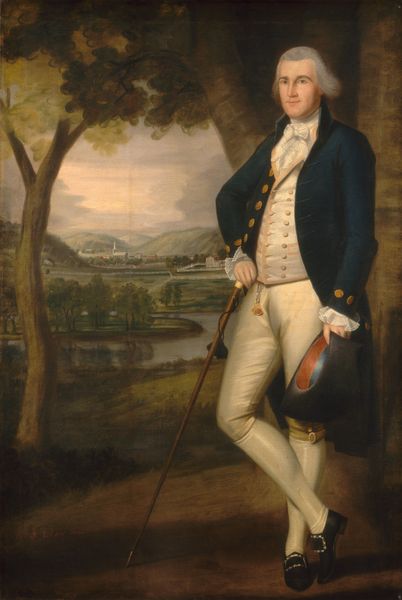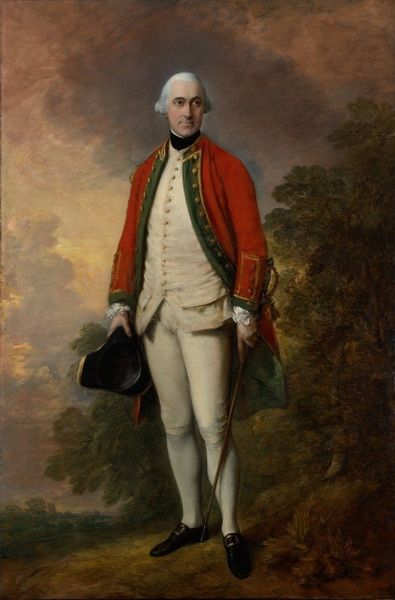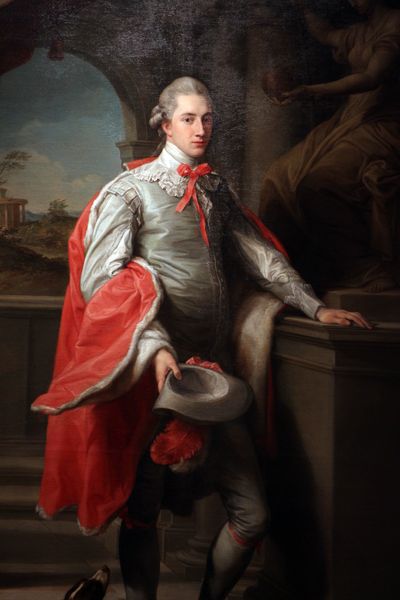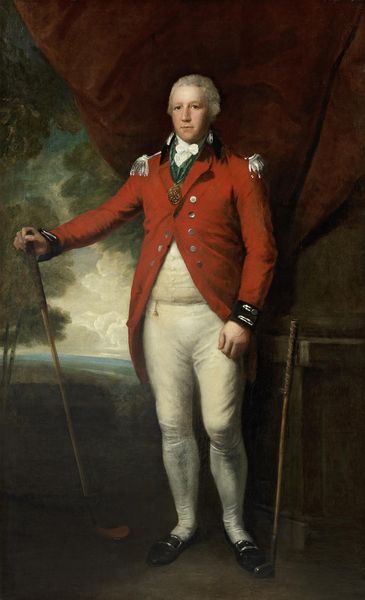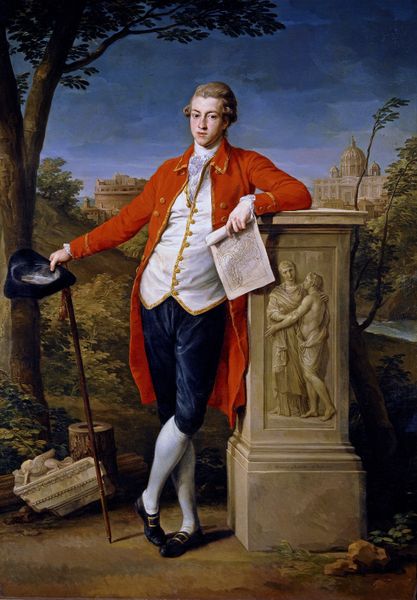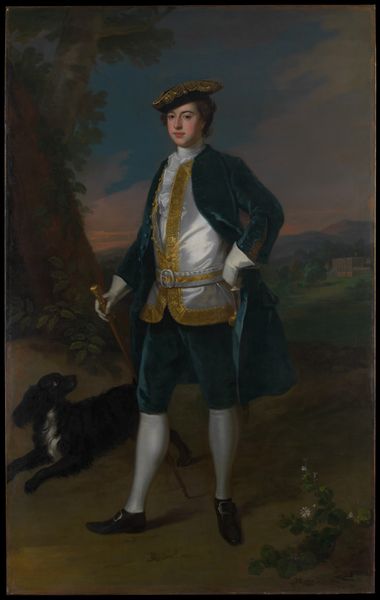
painting, oil-paint
#
portrait
#
neoclacissism
#
painting
#
oil-paint
#
romanticism
#
history-painting
Copyright: Public domain
Curator: What strikes me immediately about Samuel Morse’s "Portrait of Lafayette," created in 1826 using oil paints, is the almost theatrical lighting—it’s as if the subject is caught between the spotlight and a brewing storm. Editor: I find that interesting. What truly grabs my attention is the juxtaposition of historical references within a moment of profound social and political change. This painting serves not merely as a likeness but as a statement, one embedded within revolutionary identity and the early American Republic’s entanglement with Europe. Curator: Absolutely, we need to consider Morse’s positioning within the emerging American art world. The meticulous detail in Lafayette’s garments speaks volumes; the tailoring, the quality of the fabric—these choices signal wealth, status, and transatlantic connections at a time when America was asserting its own economic independence. I see Morse making deliberate choices. Editor: And think of the bust in the background! Morse’s subtle but poignant placing of George Washington nods toward a shared revolutionary spirit while framing Lafayette as a contemporary embodiment of republican ideals, even if those ideals were already fraught with tensions regarding race, class, and gender in both America and France. How interesting that both of them also benefited greatly from the products of enslaved people. Curator: Indeed, the use of oil paint itself is worth noting. By choosing this expensive medium, Morse elevates Lafayette to the realm of high art, aligning him with European traditions of portraiture while simultaneously celebrating an American hero, given Lafayette’s close and meaningful contributions to both revolutions. The very materials tell a story. Editor: And look at the stormy backdrop compared to the clean, precise Neoclassical architecture; doesn’t this reflect the unstable ground beneath Lafayette's feet despite his apparent triumph? Morse encapsulates Lafayette as a figure caught between worlds, ideologies, and historical moments. We might want to examine this from perspectives outside of Europe and America, such as Haitian revolutionaries, to get a fuller picture. Curator: Ultimately, viewing "Portrait of Lafayette" as a carefully constructed object lets us uncover a lot of deliberate actions by the artist. Editor: Exactly. Understanding these intersecting forces unlocks not just the story of an individual but offers critical commentary on broader narratives shaping American identity.
Comments
No comments
Be the first to comment and join the conversation on the ultimate creative platform.
